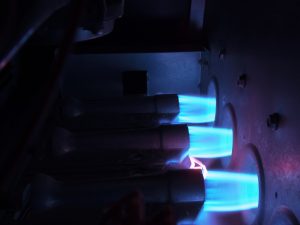 Once upon a time, the most common furnace for a house was a ghastly monstrosity known as an “octopus furnace.” It sat in the basement of the home, burned coal, and distributed heat by letting it rise through large pipes that crawled up through the house. Inefficient, unreliable, costly, dangerous.
Once upon a time, the most common furnace for a house was a ghastly monstrosity known as an “octopus furnace.” It sat in the basement of the home, burned coal, and distributed heat by letting it rise through large pipes that crawled up through the house. Inefficient, unreliable, costly, dangerous.
Obviously, furnaces have come a long way since then. We don’t have old octopus furnaces around in Florida (we rarely have basements!), but the changes in furnace technology over only the last two decades are impressive. If you have an older furnace (15 years or more), we recommend looking into the new models with their superior efficiency.
The Ways Furnaces Are Improving
It’s simple to say, “Technology is better, so furnaces are better.” But what is making furnaces better than before? Below are four major innovations that have made furnaces more efficient than ever:
- Multi-stage burners: With an older furnace, the burners were either on or off. Full heat or no heat. The multi-stage burner is more like the burners on a gas stove. Imagine if you could only cook on the stove with the burners at the high setting. Not convenient, right? It’s not for a furnace either, so multi-stage burners make an enormous difference. You don’t have to worry about the settings, either. The burners adjust based on the heating needs of the house, so they will automatically run on lower capacity when possible.
- Variable speed technology: The blower in the air handler is another “all or nothing” device that now has the option to run at a lower capacity. Special motors modulate the blower speed to adjust to comfort needs. Not only does this reduce energy consumption, it helps to create a more even spread of heating around the house.
- Condensing technology: The standard gas furnace has a single heat exchanger, the metal container that gathers hot combustion gas and transfers it to the air. A condensing furnace has a second heat exchanger that collects the exhaust gas from the first. It condenses the exhaust vapor to draw even more heat from it. This lets the furnace get every last drop of thermal energy from its natural gas source.
- Sealed combustion: When you look into the furnace as its running, can you see the blue light of the gas jets? This was the conventional way furnaces were built for decades—they drew air for combustion from the air around the furnace. Sealed combustion furnaces draw their air through a PVC pipe that runs to the outdoors and has the combustion chamber sealed off (you can’t see the light of the burners if you look in). Sealed combustion loses less heat, avoids drying out the air in the house, and is safer.
Ready for an All-New, All-Improved Furnace?
If your house has an old gas furnace in it, it may be time to call an HVAC company in Gainesville, FL to schedule a replacement. Our heating pros will help you find an option for home comfort in the mild Florida winters that will provide the warmth you need at a lower cost.
[(site_name)] has served the Communities of North Central Florida since 1998. Call for an estimate on new home heating.
